-
 Bitcoin
Bitcoin $94,873.9084
0.51% -
 Ethereum
Ethereum $1,823.9995
0.80% -
 Tether USDt
Tether USDt $1.0000
-0.02% -
 XRP
XRP $2.1410
-0.68% -
 BNB
BNB $598.4937
2.11% -
 Solana
Solana $147.1023
2.20% -
 USDC
USDC $1.0000
0.00% -
 Dogecoin
Dogecoin $0.1711
0.18% -
 TRON
TRON $0.2486
0.86% -
 Cardano
Cardano $0.6652
-1.53% -
 Sui
Sui $3.4394
5.60% -
 Chainlink
Chainlink $13.6901
-1.35% -
 Avalanche
Avalanche $19.7402
-0.48% -
 Stellar
Stellar $0.2594
-2.50% -
 UNUS SED LEO
UNUS SED LEO $8.6827
-4.28% -
 Shiba Inu
Shiba Inu $0.0...01274
0.83% -
 Toncoin
Toncoin $2.9666
-1.69% -
 Hedera
Hedera $0.1738
-1.59% -
 Bitcoin Cash
Bitcoin Cash $354.0456
-0.64% -
 Hyperliquid
Hyperliquid $20.3829
2.75% -
 Litecoin
Litecoin $83.8543
-1.54% -
 Polkadot
Polkadot $3.9298
0.38% -
 Dai
Dai $1.0000
0.00% -
 Monero
Monero $277.0562
-0.80% -
 Bitget Token
Bitget Token $4.3018
-0.43% -
 Ethena USDe
Ethena USDe $1.0004
-0.01% -
 Pi
Pi $0.5881
-0.39% -
 Pepe
Pepe $0.0...07957
-1.35% -
 Bittensor
Bittensor $374.8425
9.82% -
 Uniswap
Uniswap $4.9916
-0.03%
Are digital currency wallets safe?
To ensure the security of digital assets, users should carefully consider the unique characteristics and security measures of different wallet types, implementing practices such as strong passwords and two-factor authentication.
Jan 12, 2025 at 07:44 pm
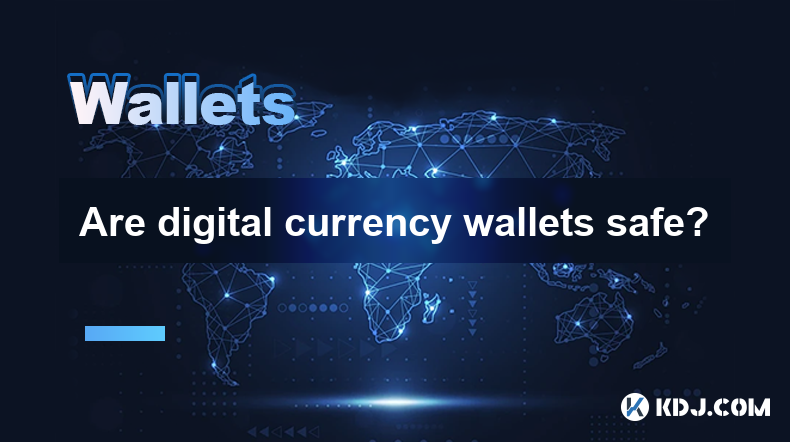
Key Points:
- Digital currency wallets vary in security features and measures.
- Users should carefully evaluate wallet options based on their specific needs and requirements.
- Understanding the different types of digital currency wallets and their unique characteristics is crucial.
- Secure storage practices, such as strong passwords and two-factor authentication, are vital for protecting digital assets.
- Education and vigilance are essential to mitigating risks associated with digital currency wallets.
Exploring the Security Landscape of Digital Currency Wallets
1. Understanding Digital Currency Wallet Types
- Custodial Wallets: Third-party platforms hold private keys and manage user funds. They offer convenience but sacrifice user control over their assets.
- Non-Custodial Wallets: Users retain full control of their private keys and manage their funds independently. This provides enhanced security but also requires greater responsibility.
- Hardware Wallets: Dedicated physical devices store private keys offline, providing the highest level of security against cyberattacks.
- Software Wallets: Digital applications installed on computers or smartphones for convenient access to funds but may be more vulnerable to malware and hacking.
- Paper Wallets: Private keys are written down on physical paper, offering a secure offline storage option but requiring careful handling.
2. Evaluating Wallet Security Features
- Multi-Factor Authentication (MFA): Additional verification methods, such as SMS codes or biometrics, enhance security.
- Encryption: Strong encryption algorithms protect data stored in wallets, making it difficult for unauthorized access.
- Transaction Confirmation: Multiple confirmations are required before transactions are finalized, reducing the risk of malicious or accidental transfers.
- Audit Trails: Transparent and auditable records track transactions and provide a history of account activity.
- Cybersecurity Measures: Wallets should have robust anti-phishing and malware detection mechanisms to safeguard against cyberattacks.
3. Secure Storage Practices for Digital Assets
- Strong Passwords: Use complex and unique passwords for wallet accounts to prevent unauthorized access.
- Two-Factor Authentication: Enable 2FA for an extra layer of security, requiring multiple devices or methods for account access.
- Ledger Segregation: Store funds in multiple wallets to mitigate the risk of losing all assets in a single security breach.
- Regular Software Updates: Keep wallet software up to date to patch security vulnerabilities and protect against known exploits.
- Avoid Phishing Scams: Be wary of suspicious emails, websites, or messages requesting private keys or account details.
4. Risk Management for Digital Currency Wallets
- Educate Yourself: Understand the different types of wallets, security measures, and best practices.
- Research and Due Diligence: Thoroughly evaluate potential wallet providers before entrusting them with your assets.
- Monitor Transactions Regularly: Keep track of your account activity and promptly report any suspicious transactions.
- Store Physical Keys Securely: If using a hardware wallet, store the recovery seed phrase in a safe and secure location.
- Be Vigilant: Stay aware of emerging threats and industry best practices to protect your digital assets effectively.
FAQs Related to Digital Currency Wallets
1. What are the most secure digital currency wallets?
The most secure digital currency wallets are typically hardware wallets, such as Ledger or Trezor, as they provide offline storage of private keys.
2. How can I protect my digital currency wallet?
Use strong passwords, enable multi-factor authentication, store funds in multiple wallets, and educate yourself on best practices to safeguard your digital assets.
3. What are the risks associated with using digital currency wallets?
Risks include phishing scams, malware attacks, hacking, and user error. It is essential to be vigilant and implement appropriate security measures.
4. How can I recover my digital currency wallet if it is lost or stolen?
If using a hardware wallet, the recovery seed phrase can be used to restore access. For non-custodial wallets, recovery may not be possible if the private key is lost.
5. How do I choose the right digital currency wallet?
Consider your specific needs, such as security level, convenience, and features. Research and evaluate potential wallet providers to find the best fit.
Disclaimer:info@kdj.com
The information provided is not trading advice. kdj.com does not assume any responsibility for any investments made based on the information provided in this article. Cryptocurrencies are highly volatile and it is highly recommended that you invest with caution after thorough research!
If you believe that the content used on this website infringes your copyright, please contact us immediately (info@kdj.com) and we will delete it promptly.
- Christian Thompson, Managing Director of the Sui Foundation, stated that bipartisan U.S. stablecoin legislation will be a powerful mechanism for driving capital formation and retail onboarding into Web3 ecosystems.
- 2025-05-06 00:20:12
- Robert Kiyosaki Warns of the Biggest Market Crash in History and Urges Investment in Bitcoin.
- 2025-05-06 00:20:12
- Toronto, ON – May 5 2025 @ 9 AM ET – ETHToronto and ETHWomen to Commemorate the 10-Year Anniversary of Ethereum
- 2025-05-06 00:15:12
- Bonk (BONK), the largest Solana-based dog-themed meme coin, is the third-fastest-growing crypto today
- 2025-05-06 00:15:12
- TAO Price Prepares for a Supply Shock — What Happens When the Bittensor Halvening Hits?
- 2025-05-06 00:10:11
- Cardano (ADA) Closing the Market Cap Gap With Dogecoin (DOGE)
- 2025-05-06 00:10:11
Related knowledge
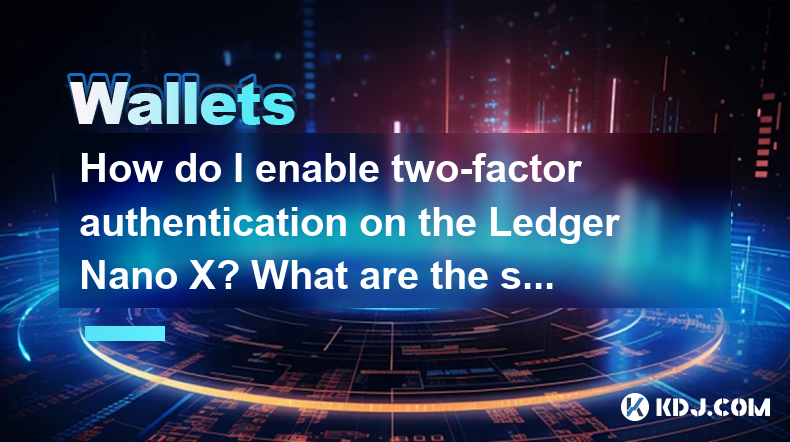
How do I enable two-factor authentication on the Ledger Nano X? What are the security options?
May 02,2025 at 09:49pm
Enabling two-factor authentication (2FA) on your Ledger Nano X is a critical step in securing your cryptocurrency assets. The Ledger Nano X offers robust security options that enhance the protection of your digital wealth. In this article, we will guide you through the process of enabling 2FA on your Ledger Nano X and explore the various security featur...
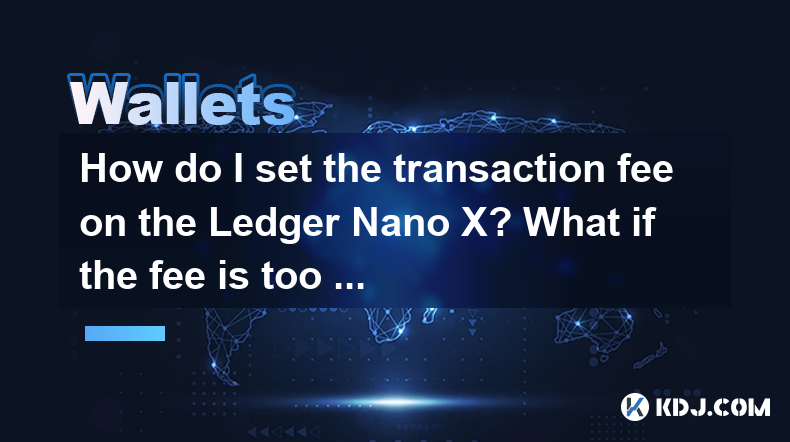
How do I set the transaction fee on the Ledger Nano X? What if the fee is too high?
May 05,2025 at 09:21pm
Setting the transaction fee on your Ledger Nano X is an essential part of managing your cryptocurrency transactions efficiently. The transaction fee directly impacts how quickly your transaction is processed and confirmed on the blockchain. In this guide, we will walk you through the steps to set the transaction fee on your Ledger Nano X, and what to do...
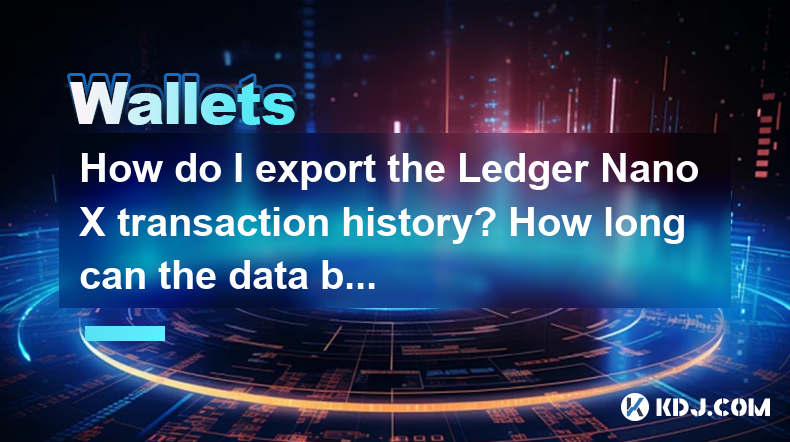
How do I export the Ledger Nano X transaction history? How long can the data be saved?
May 04,2025 at 07:21am
Introduction to Ledger Nano X and Transaction HistoryThe Ledger Nano X is a hardware wallet designed to store your cryptocurrency safely. It supports a wide range of cryptocurrencies and offers robust security features. One of the essential aspects of managing your cryptocurrencies is keeping track of your transaction history. The Ledger Nano X allows y...
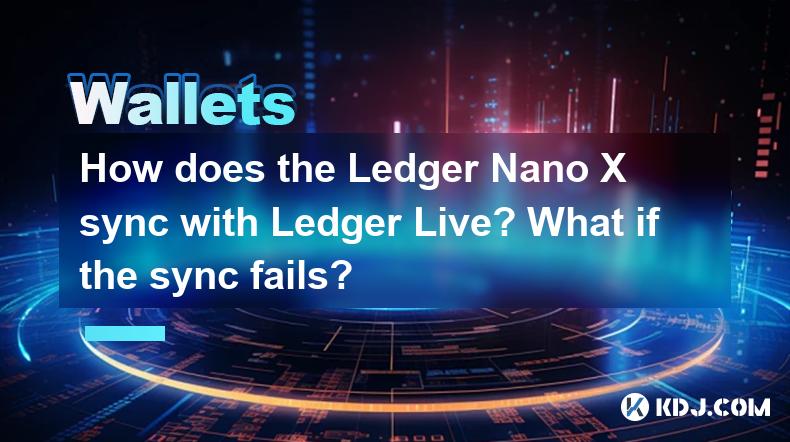
How does the Ledger Nano X sync with Ledger Live? What if the sync fails?
May 04,2025 at 12:07pm
The Ledger Nano X is a popular hardware wallet that allows users to securely manage their cryptocurrency assets. One of the key features of the Ledger Nano X is its ability to sync with the Ledger Live application, which provides a user-friendly interface for managing your crypto portfolio. In this article, we will explore how the Ledger Nano X syncs wi...
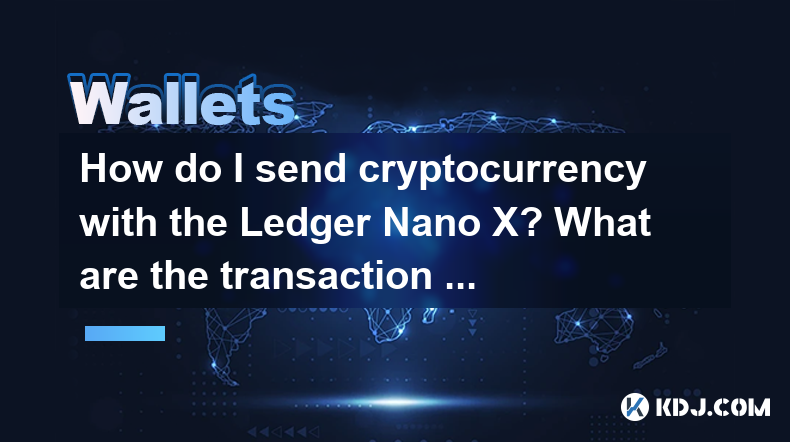
How do I send cryptocurrency with the Ledger Nano X? What are the transaction confirmation steps?
May 03,2025 at 05:01am
Sending cryptocurrency using the Ledger Nano X involves a series of steps that ensure the security and accuracy of your transactions. This process is designed to be user-friendly while maintaining the high level of security that Ledger devices are known for. In this article, we will guide you through the process of sending cryptocurrency with the Ledger...
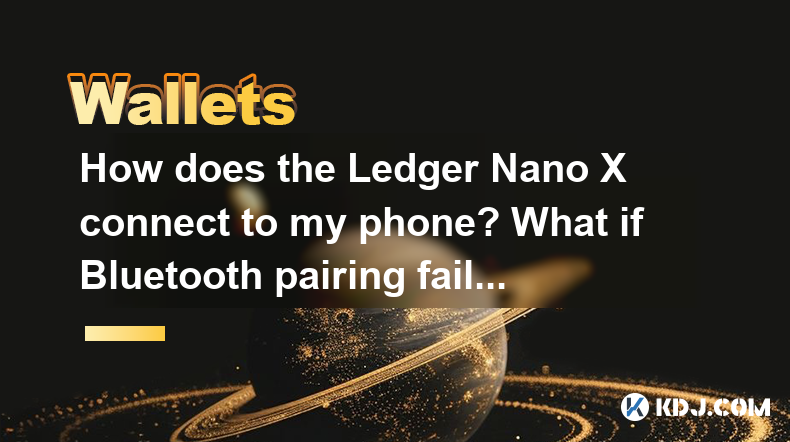
How does the Ledger Nano X connect to my phone? What if Bluetooth pairing fails?
May 02,2025 at 07:07pm
The Ledger Nano X is a popular hardware wallet designed to securely store your cryptocurrency. One of its key features is the ability to connect to your smartphone via Bluetooth, allowing for a seamless and convenient user experience. In this article, we will explore how to connect your Ledger Nano X to your phone and what to do if Bluetooth pairing fai...

How do I enable two-factor authentication on the Ledger Nano X? What are the security options?
May 02,2025 at 09:49pm
Enabling two-factor authentication (2FA) on your Ledger Nano X is a critical step in securing your cryptocurrency assets. The Ledger Nano X offers robust security options that enhance the protection of your digital wealth. In this article, we will guide you through the process of enabling 2FA on your Ledger Nano X and explore the various security featur...

How do I set the transaction fee on the Ledger Nano X? What if the fee is too high?
May 05,2025 at 09:21pm
Setting the transaction fee on your Ledger Nano X is an essential part of managing your cryptocurrency transactions efficiently. The transaction fee directly impacts how quickly your transaction is processed and confirmed on the blockchain. In this guide, we will walk you through the steps to set the transaction fee on your Ledger Nano X, and what to do...

How do I export the Ledger Nano X transaction history? How long can the data be saved?
May 04,2025 at 07:21am
Introduction to Ledger Nano X and Transaction HistoryThe Ledger Nano X is a hardware wallet designed to store your cryptocurrency safely. It supports a wide range of cryptocurrencies and offers robust security features. One of the essential aspects of managing your cryptocurrencies is keeping track of your transaction history. The Ledger Nano X allows y...

How does the Ledger Nano X sync with Ledger Live? What if the sync fails?
May 04,2025 at 12:07pm
The Ledger Nano X is a popular hardware wallet that allows users to securely manage their cryptocurrency assets. One of the key features of the Ledger Nano X is its ability to sync with the Ledger Live application, which provides a user-friendly interface for managing your crypto portfolio. In this article, we will explore how the Ledger Nano X syncs wi...

How do I send cryptocurrency with the Ledger Nano X? What are the transaction confirmation steps?
May 03,2025 at 05:01am
Sending cryptocurrency using the Ledger Nano X involves a series of steps that ensure the security and accuracy of your transactions. This process is designed to be user-friendly while maintaining the high level of security that Ledger devices are known for. In this article, we will guide you through the process of sending cryptocurrency with the Ledger...

How does the Ledger Nano X connect to my phone? What if Bluetooth pairing fails?
May 02,2025 at 07:07pm
The Ledger Nano X is a popular hardware wallet designed to securely store your cryptocurrency. One of its key features is the ability to connect to your smartphone via Bluetooth, allowing for a seamless and convenient user experience. In this article, we will explore how to connect your Ledger Nano X to your phone and what to do if Bluetooth pairing fai...
See all articles




















































































